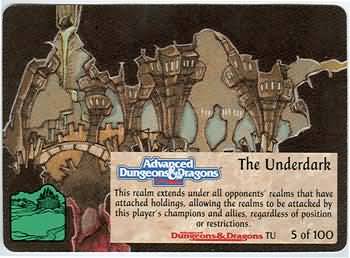

|
|
|
|
|
|
|
|
|
|
|
|
Although one type of underground
environment might seem to be
pretty much like another, especially
when a character cannot see
his nose in front
of his face, a wide variety of locations await the
character willing to explore his surroundings
and press on into
deeper and uncharted passageways.
The most significant && fundamental
differences between
underground locations are due to their
origins. Were they created
by natural geological forces such as erosion,
earthquakes,
or volcanic eruptions?
Or were they created by the efforts of
creatures,
intelligent or unintelligent, to serve
their needs?
The Rat God (god of underground areas)
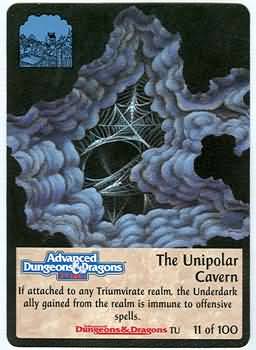
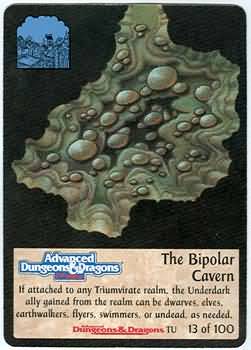

| Limestone | Sea | Lava | Geothermal |
| Cave Formations | Luthic (goddess of caves) | Beltar (goddess of deep caves) | Overview of the Underdark |
Caves && caverns have been created
by natural forces and
have appropriate characteristics. Often
such locations serve as
starting points for dungeon
settings.
Three types of caves are commonly encountered:
limestone caves,
sea caves, and
lava caves.
Limestone
caves are by far the most common type.
The Limestone Caverns (1 sq. = 10')
Obviously
they are mostly found in areas where the
bedrock consists of a
great shelf of limestone. However, dolomite
&& marble terrain can
also serve as an environment for the creation
of a limestone cave.
A limestone cave is created by the erosive
and corrosive action
of water seeping through the rock. Rainwater
in particular aids in
the creation of a limestone cave, since
the carbon dioxide
absorbed from the air helps to make rainwater
a dilute form of
H2CO3--a
fluid that quickly eats away limestone.
As the water seeps through the earth, gradually
widening its
passageways, the limestone cave grows.
Shifts in the water
table, caused by drought,
floods, or gradual movement of terrain
features, can increase or decrease the
flow of water through the
cave. If the water table drops, formerly
underwater passages are
left dry and full of air, creating a cave
like those that have sheltered
creatures since the beginning of time.
Such caves can often be entered through
the inlets or outlets of
the water that once flowed through them.
Although often tortuously
narrow or steep, such openings are the
most common
entrances to limestone caves.
A cave that grows too large may not be
able to support the
expanse of rock above it, and the ceiling
may collapse to form a
sinkhole. Such a feature drops precipitously
from the surface to
the floor of the cave, but can be used
as an entrance for characters
willing to do a little rope work. <(Rope
& Wall: +40%)>
When the water has drained from a limestone
cave, it is not
uncommon for seepage or even small streams
to continue to
trickle through it. It is the seeping
of small trickles of water that
creates many of the spectacular underground
rock formations
that are familiar to those who have ventured
into caves.
The most commonly known cave features are
stony pillars
known as stalactites
(hanging from the ceiling) and stalagmites (growing
upward from the floor). As with other cave features, they
are created by the slow dripping of water,
which evaporates and
leaves behind small deposits of minerals.
Depending on the
types of minerals left behind, these cave
features can range in
color from a muddy brown to red, or even
(in rare cases) a pure
crystalline white.
Other types of cave features include draperies, flowstone, and gypsum flowers.
If a cave is subject to continuing water
seepage, it is considered
a living cave, and these features are
slowly growing
throughout it. In fact, it is not unheard
of for a cave’s features to
grow so much that they literally fill
in the cave that the same process
(of dripping and running water) created
in the first place.
Features in a living cave glisten and shine
when light is cast
upon them. They are also very sturdy.
Although occasional areas
of rubble might obstruct passage, such
caves are generally very
clean and almost dust-free. Of course,
this is before the cave is
entered or used by creatures from the
outside world or exposed
to air from the surface.
Mud is also a very common feature of a
living cave. All low
areas that are not regularly swept by
flowing water contain pools
of sticky mud. Depending on the drainage
and shape of the area,
these mud pools can be quite deep.
A dead cave, on the other hand, is one
in which the water no
longer flows. The features in a dead cave
do not glisten, and in
fact grow very weak without the constant
humidity to reinforce
them. Left without water long enough,
a cave’s features become
very brittle and eventually crumble into
dust.
A dead cave is much more likely to be choked
with rubble than
its living counterpart. A layer of dust
often covers everything. If
water can be found, it has generally been
standing in a pool for
centuries. Even so, the water found in
such locations is very
rarely stagnant-the cold temperatures
and lack of sunlight see
to that.
Some limestone caves
are completely filled with water. These
caves do not have
the features described above, unless those
features were created
when the cave was filled with air, and it has
subsequently filled
with water. In general, the passages in a
water-filled cave
are smooth and rubble-free. Nonetheless, the
water may flow through
very narrow openings or tightly winding
passages, making
it difficult or impossible for a character to travel
through.
Sea
caves are formed along current or former coastlines
where
the erosive action
of pounding surf gradually wears an entrance
into the bedrock.
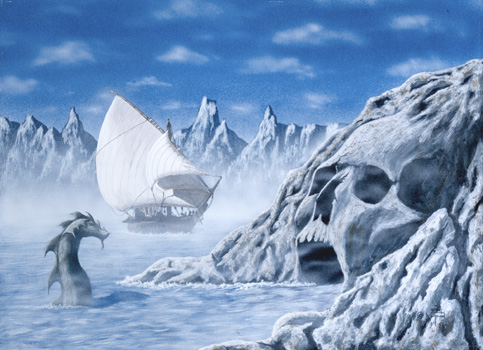
They are generally
much smaller than limestone
caves,
since the waves disperse their energy quickly as
they work their
way inward.
Sea caves are often
partially water-filled. Depending on the
changing level of
the water, a sea cave might even be completely
submerged, its mouth
hidden to all observers who are not themselves
submerged. On the
other hand, if the water level has fallen
or the ground has
risen, a sea cave might be discovered in a cliff
far above the pounding
surf, or even many miles inland if the
coast has gradually
moved farther out to sea.
Sea caves have smooth
floors, walls, and ceilings, with none of
the spectacular
features of their limestone cousins. On the other
hand, their often
relatively easy access makes them more likely
to contain some
relic of long-past inhabitants.
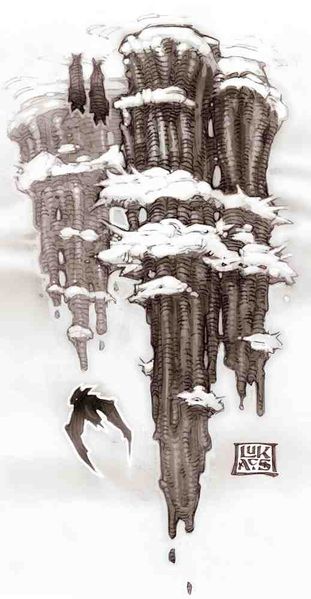
When
a river flows around a bend, the abrasion of water
against the outer
riverbank might erode a space that eventually
becomes fairly large.
Such caverns resemble sea caves in most
respects.
Lava
caves are created when the crust of a flowing surface of
lava hardens, but
the molten lava beneath the crust continues to
flow.

If the conditions
are right, the lava flows away to leave an
air-filled space
that may reach a considerable size.
Lava caves are commonly
found in areas of volcanic activity.
They do not contain
the features typical of limestone caves.
Unless the lava
caves are in a region of heavy rainfall or are at a
very low elevation,
they may well be completely dry. In fact,
because of their
origins, a great many lava caves have no exits to
the outside world.
Their existence can only be discovered by
chance excavation,
or perhaps by accidentally breaking through
the crust in an
area where it is very thin.
Earthquakes
&& rockslides can occasionally
create underground
chambers that are
tenuously supported by accumulated
rubble. While these
underground locations resemble caves, they
are not true caves.
Occasionally such a chamber may be large
enough for a party
of characters to enter, but rarely is there much
to see. These locations,
however, can make good overnight shelters
and may also provide
comfortable lairs for any number of
potentially hostile
animals || monsters.
Geological faulting
can create cavities in the earth when a
large shelf of rock
moves and the neighboring rock remains stationary.
Such caverns are
often completely enclosed, but may be
very
large.
<move this one to the appro. section, and link to that section from the above>
Quote:
Originally
Posted by fett527
Gary,
If you fall in lava, do you get a saving throw?

Yah,
right!
1
or less of 10d10 saves.
Gary
Quote:
Originally
Posted by Holy Bovine
If
Gary Gygax falls in lava the lava doesn't get a saving throw.
Everyone else just dies.

This
brings to mind the use of certain potent magical devices that would indeed
pretty much negate the effects of lava or magma--anything having to do
with compatibility with Elemental Fire.
Having
been divorced from my first wife, I no longer need such magical protection
Cheerio,
Gary
Geothermal
heat is a feature that can be encountered in deep
caves of any kind, although it is particularly
likely in a lava cave,
since the lava itself is a carrier of
geothermal heat. Geothermal
heat is simply heat energy originating
from the unknown reaches
deep under the crust of the earth.
This heat can be encountered by underground
explorers in a
number of ways. The most dramatic, perhaps,
is the glowing
crimson flow of molten lava. Such melted
rock carries heat from
the deepest reaches of the earth toward
the surface, and retains
(and radiates) its heat for a long time.
Molten lava has a temperature
of approximately 1,800° F, and quickly
kills any non-fire
resistant creature forced to come into
contact with it.
Even in areas where the lava has cooled
to a solid crust, it can
still be blisteringly hot. A character
foolish enough to venture onto
such a crust runs the risk of breaking
through into the infernal
heat below.
Steam is another manifestation of geothermal
heat that could
be encountered by cave explorers. Although
not nearly as hot as
lava, steam can nonetheless scald or even
kill a creature caught
in its intense blast. Steam can arise
suddenly in areas of high
geothermal activity, whenever water happens
to run into some
area that is hot enough to quickly vaporize
it. Such instant vaporization
can create high steam pressures, and cause
blasts of
steam to erupt far from the actual source
of the heat.
A more tolerable
instance of geothermal heat is in the form of
warm or hot water.
Depending on the proximity and intensity of
the heat source,
the water temperature can range from lukewarm
to boiling.
Warm or hot air rising
through subterranean passages can
often be an explorer’s
first warning that he is approaching a
source of geothermal
heat. This can actually be a pleasant experience,
especially for characters
well-chilled by a long expedition
through dark and
dank chambers.
Unnatural- Underground Locales
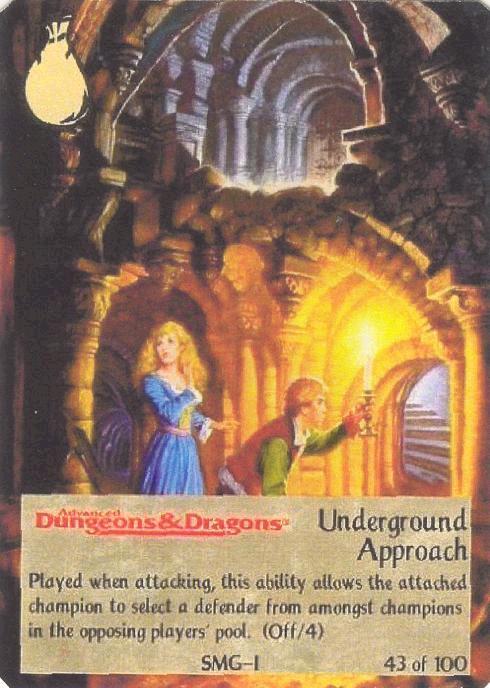
| Dungeons | Mines | Burrows | Realms |

are familiar to nearly all adventurers.
Some dungeons
are constructed entirely from caves,
while others use caves
as entrances || emergency exits only.
In any case, intelligent creatures
The First Dungeon Adventure (DMG)
have built each dungeon to serve a particular purpose.
Dungeon passages generally run within a
few hundred feet of
the surface, although this is not a hard
&& FAST rule. The deeper
the dungeon, however, the harder the task
of moving the excavated
{material}
out of the way.
Dungeons are generally excavated from a
soft rock such as
sandstone || limestone. These materials
are not as hard to excavate
as granite, for instance, and still provide
a solid and sturdy
support for the dungeon’s corridors &&
rooms. Some dungeons
are excavated from dirt, and require constant
shoring
up (at least
at 10-foot intervals) in order to prevent
cave-ins. A dungeon excavated
from dirt will not last as long as a stone
dungeon.
Some dungeons begin as buildings whose
ruins are later buried
by new buildings, until the original layer
seems to be well
underground. Dungeons can be encountered
long after their construction,
and may in fact be well on the way toward
collapse--or
they may be newly excavated or even in
the process of construction when
characters encounter them. <also, make a link to mining>
Dungeons are created for a wide variety
of purposes.
The most common include service as jails,
hiding places for treasures, lairs
for bands of underground creatures, or
positions of defense. In a
world where flying creatures are ever-present,
dungeons can
prove to be stronger fortresses than castles!
Mines in a fantasy world are almost always tunnels || shafts.
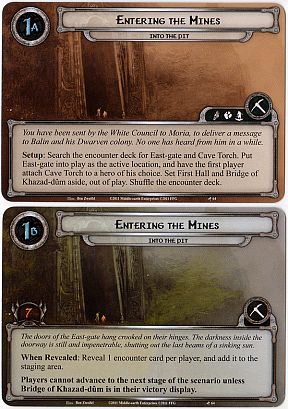
Some mines, particularly
those developed over many centuries
by diligent excavators such as dwarves
|| gnomes, can become
complicated networks of tunnels extending
through three dimensions
and stretching for dozens of miles.
Mines can be either active or inactive,
which indicates whether
or not they are currently in use. The
miners who created an inactive
mine might have ceased their work because
the vein of material
they were excavating was depleted, but
this is not necessarily
so. Disasters or conflicts might have
forced the operation to discontinue.
Active mines are usually well-guarded,
and inactive
mines often become the lairs of subterranean
monsters.
Burrows are
generally long tunnels, perhaps with a widened
spot at some point, created by creatures
as shelters.
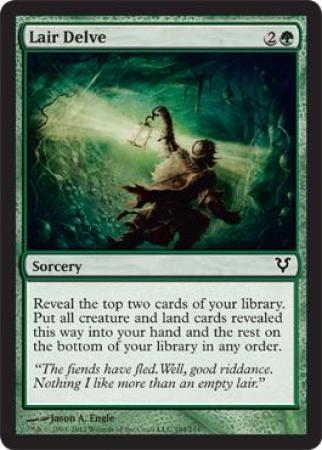
Only
very large burrows
are big enough for characters to enter; unfortunately,
very large burrows
are usually created by
very large creatures
that do not always react kindly to the intrusion.
Burrows are generally excavated from dirt,
but certain creatures
(such as umber
hulks) can create burrows in solid stone.
A
burrow is generally no bigger in diameter
than the creature who
created it, although a larger chamber
is often excavated at the
burrow’s deepest end.
Realms
are vast underground reaches made up of caverns,
dungeons,
and lofty passages of questionable origin deep
beneath the earth.
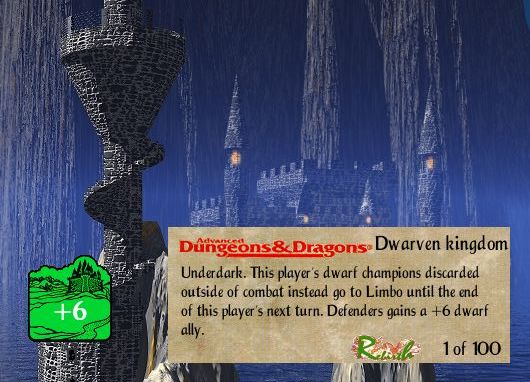
Realms are rarely
found within a mile of the
surface and often
extend far deeper than this.
These realms are
regions of mystery to most surface-dwelling
creatures. Information
about them is based on speculation or the
few first-hand accounts
of adventurers who have visited these
underground realms
and returned to tell the tale.
It is known that
certain races, such as the drow elves, deep
gnomes,
duergar,
kuo-toa, and derro, to name a few, live in vast
underground reaches
that never see the light of day. The true
extent of such realms
can only be guessed at.
These realms contain
vast networks of caverns that might rival
an entire nation
in size, and underground bodies of water as big
as any outerworld
sea. These seas contain islands just as surface
seas do. Certain
of the vast realms could best be described as
wilderness, for
no cultures flourish there, while other areas boast
cities and fortresses
worthy of the most ADVANCED civilizations.
Many of the creatures
inhabiting these realms have been
encountered by surface
dwellers in the meeting--ground of the
dungeon, for this
is where the deep--dwellers and surface dwellers
are most likely
to encounter each other. Other creatures--horrific
beasts that never
even venture up to the level of the
dungeons--are rumored
to live in these underground realms, but ,
no one living can
attest to their existence.
| Cave-ins | Floods | Fires | Poisonous Gases | Volcanoes |
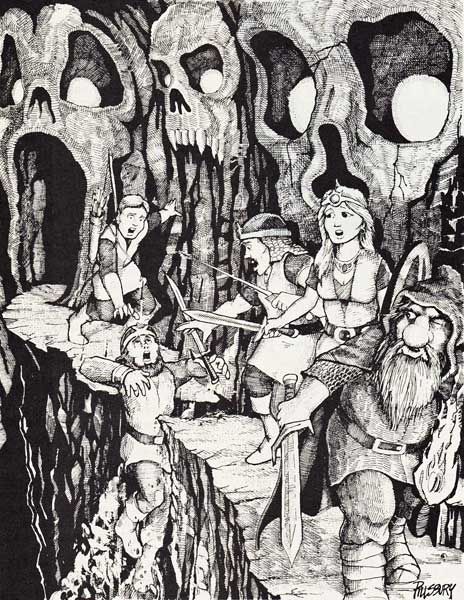
-
Dungeons, burrows,
caves, and realms all share some com-
mon hazards that are created by their
location under the surface
of the earth. The following dangers are
relatively rare, but each of
them can be life-threatening to a character
deep below the surface
of the world.
Cave-ins
are a constant problem to creatures living underneath
tons of earth and rock. Cave-ins can be
triggered by erosion,
or by sudden shocks such as earthquakes
or explosions.
Of course, characters or creatures directly
underneath a section
of dungeon or cave that caves in suffer
damage from the
material falling on them, and are often
pinned by the weight of
this material, or trapped in a small area
with little air.
Dungeons are often protected against cave-ins
by shoring up
the passages with timbers or stone arches.
Caverns do not have
the benefit of such engineered protection,
and realms are generally
too vast for such protection to be practical.
Because of their
vast size and durability, the realms of
the underearth are rarely
subject to cave-ins. If a cave-in occurs
in a realm, however, its
potential for disaster rivals that of
the worst hurricane or tidal
wave ever to ravage a surface land.
Floods
are yet another natural phenomenon with potentially
disastrous results.
Because of the cramped nature of underground
environments, flood
water has little chance to spread out
and disperse its
effects. Indeed, underground corridors may well
fill with water,
making drowning a virtual certainty for any airbreathing
creature caught
there.
Fires
threaten the well-being of underground dwellings in a
double sense, for
they consume combustible objects in their
path, and also use
up the precious oxygen that definitely exists in
a finite supply.
Fortunately, at least
for fire prevention, wood is not a very common
building material
underground. The difficulty of transporting
wood into a dungeon
and its tendency to rot in damp conditions
both serve to discourage
its use. Certain tasks, however, such as
the shoring up of
a corridor, are much more easily accomplished
with wood than with
stone.
Poisonous
Gases present an unseen but real menace to all
creatures that must rely on oxygen for
life. These gases can be of
natural origin, such as the sulfur dioxide
commonly created
around areas of volcanic activity, or
can be of magical or manufactured
origin. Obviously, the use of poison gas
as a weapon of
war is greatly enhanced in the constricted
conditions of the
u nderearth.
Volcanoes
are a major cause of subterranean fires and poisonous
gas
emissions, as well as other problems. Often occurring in
conjunction with earthquakes,
a volcanic burst can fill inhabited
corridors with lava or steam, or close
off escape passages or popular
transportation routes.